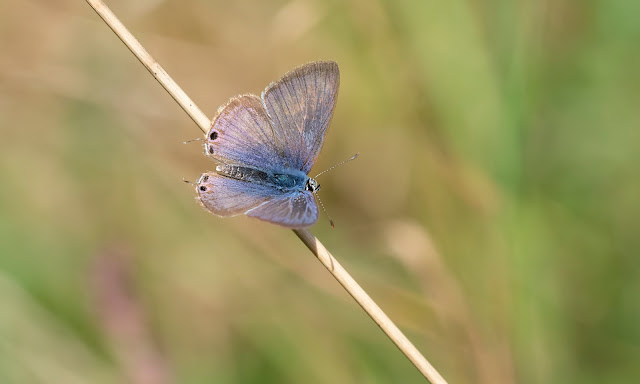With my Naturetrek tours coming up, and all the clients hoping to see the Long-tailed Blues, it was a bit of a worry that very few had been seen in the weeks leading up to the tours. However, with less than a week to go reports from Lancing suddenly changed everything.
I then did a couple of recce's for each of the tours, as well as visiting with the actual tours. In total I visited the area 7 times and saw Long-tailed Blues on each occasion. By my last visit the butterflies seen were getting more tatty, but of course, Long-tailed Blues are always good to see in the UK where they are still considered to be a rare migrant butterfly.
Sightings are now slowing up as that generation has nearly finished, but with such a quick life cycle, it will only be a few short weeks before some lovely fresh individuals are seen, and with plenty of eggs found at several sites there should be plenty of butterflies about.
A few of my images from the visits follow, as well as some eggs found on the Broad-leaved Everlasting Pea. All the eggs found, apart from a couple had already hatched, so were probably already a week or more into their 5-6 week cycle.







So, are Long-tailed Blues now resident in the UK?
ReplyDeleteHi Nick. Since 2013 they have become regular migrants, arriving during August in varying numbers. They are unable to survive our winter though, so in October they head back south. Last year good numbers were seen along Worthing seafront in mid-late September as they prepared for the flight south.
DeleteWow! That is really interesting. I never considered Lycaenidae as migrants. If our climate continues to warm I wonder if they will stay over winter.
Delete